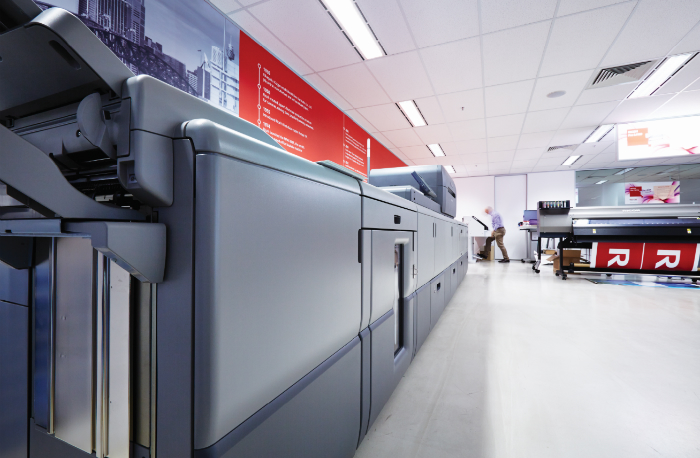
The nature of the print industry is changing. Gone are the days of big print runs for customers seeking economies of scale. In this new era of individualisation, customers want smaller, more tailored print runs at lower costs.
For example, marketers are finding that personalisation trumps even so-called hot areas such as mobile, big data, social, and real-time marketing, according to Adobe SMO Ann Lewnes.
When Adobe asked marketers to identify the one capability that will be most important to their company’s marketing in the future, personalisation ranked highest.
This increased need for personalisation means marketers simply do not want to run bulk jobs anymore. Instead of printing thousands of generic brochures, marketers prefer to print fewer, targeted brochures with information tailored for specific audiences.
As a result, printing companies are being asked to do more of these smaller jobs, creating a bigger administrative burden and requiring more input from printers. In the past, printers may have taken a handful of large orders per day. Now, with the rise of personalised and digital marketing, printers take a much higher volume of smaller orders each day.
This presents a significant challenge for traditional printing companies that are yet to transition to digital printing. The time it takes to process each order has not changed, so managing the order from initial customer enquiry through to completion and invoice is therefore becoming an expensive process. Print providers must find new and innovative ways to introduce efficiencies that reduce job costs, attract new customers and help retain existing ones.
In addition to the reduced size of print runs, engaging with customers more often on small orders can increase the potential for human error. When this happens, the printer usually needs to fix mistakes at their own expense, adding even more cost and lost time to the job.
The marketplace for printers is also becoming more competitive. With the push towards digital content unlikely to lose momentum, the landscape of traditional print businesses continues to evolve. According to a recent study by Innovation and Business Skills Australia (IBSA), bigger printing companies are increasingly interested in servicing smaller customers as the demand for large volume jobs declines, in turn making it harder for smaller printers to compete over the next few years.
It is therefore clear that printing companies need to find ways to operate more efficiently and effectively.
Saves time and money
Online printing operators that offer convenient services are emerging as significant players in the short-run printing market, according to the IBSA report.
Automating the print ordering process can dramatically reduce the amount of time printers must spend on administrative tasks and let them get back to the business of printing. This can help reduce costs, which in turn lets printers pass on savings to their customers or put those savings towards margins to improve the bottom line.
To help solve these problems, Ricoh has introduced TotalFlow Quick Print Suite powered by EFI. The Quick Print Suite helps easily automate print job workflow, managing the process from job submission through to job tracking and invoicing. It provides smaller printers with a cloud-based automation solution, which reduces upfront capital outlay and allows them to realise the benefits of automation which have, until now, only been accessible to larger printers.
This cloud-based solution lets printers seamlessly interact with customers by providing pre-defined and/or custom templates to reduce friction in the ordering process. For example, a printer regularly servicing a customer can set up a standard template for each type of job to avoid manually handling each order. So whether the customer needs to print brochures, business cards, or reports, they simply fill out the template and submit the order online.
This reduces the amount of time spent on the phone discussing the order and lets the printer start processing the job sooner with fewer interruptions. It also reduces the risk of error, since the customer takes responsibility for entering the correct information into the template. The self-service elements and job tracking improves the customer experience too, allowing printers to focus on quality output.
The system also lets printers track jobs electronically, which makes it easier to see where projects are up to, what resources are required, and when the jobs can be invoiced. Having all of this information so readily available lets printing company managers make smarter decisions about consumables and staff levels, potentially saving even more money.
Because it is in the Cloud, the Quick Print Suite is not only easy to use, it also requires no investment in additional hardware or software, and staff do not need to be re-skilled. It is a plug-and-play solution that works across a variety of print engines. As a subscription based service, it provides an affordable automation solution for smaller printers.
It is easy to implement and operate; printers can be up and running fast so they can start saving sooner. And it integrates seamlessly with existing print operations, so there is no major disruption to the business.
As a scalable solution, the Quick Print Suite grows along with the business. The customer experience lets users see a printer’s full offering in a single, centralised platform. They can preview, approve, and order everything online. Unparalleled visibility into incoming orders is augmented by business reports generated right from the Quick Print Suite. As the printer’s business evolves, more advanced Digital Store Front offerings can be added to gain further efficiencies and customer features.
The Quick Print Suite also lets printers diversify their business by making it simple to add more services to the catalogue. And, with their time freed from administrative tasks, print company operators can devote more time to strategic business initiatives.
Adopting a solution like this has been difficult for smaller print shop operators in the past due to the cost and complexity. However, with a subscription from just $1,500 per month for a simple, cloud-based solution, even traditional printers can benefit dramatically. By shaving even a fraction off the costs of processing each job, printers can realise significant savings.
Cost of not implementing
Adopting an automation solution requires, in many cases, a seismic shift in how printers think about their businesses. However, not doing so can have a detrimental effect on the business.
Manual print processing is time-intensive and laborious. It drives up costs and can have a detrimental effect on print quality, potentially resulting in customers taking their business elsewhere. The increasing pressure on organisations to do more with less, and find cost savings wherever possible, means they will likely choose a print supplier with the lowest prices. That means printers that haven’t upgraded their systems to let them compete more effectively on price will likely find their market share dwindling.
Relying on manual processes also increases the potential for human error, which can be both costly and embarrassing. By letting customers input information into templates themselves, printers can place the onus on them to get the information right. The chance of error is therefore greatly reduced and, if an error does occur, the printer is not beholden to reprint the job at their own expense.
Future looks bright
The IBSA report revealed that short-run personalised printing is likely to be an area of growth in the industry. This is good news for printers that already have the capability to service customers looking for this type of printing. Those that don’t already have this capacity should consider automation software as a key step towards servicing this market segment.
By offering a combination of hassle-free, online print ordering and management, along with personalised, prompt service, smaller printers can retain their competitive edge and maintain a viable business.
It is important to be able to adapt to meet changing market conditions. This means embracing the digital disruption that has seen more people prefer to do business online, as well as finding ways to direct resources towards the areas where they can add the most value.
Printing remains a competitive business. As more and more printing companies implement automation and digital solutions, making their businesses more efficient and streamlined, it will become increasingly difficult for other companies to compete effectively without doing the same. These businesses can offer lower prices, faster turnaround, and higher quality, all at a reduced cost to the business. In the face of these benefits, even the most loyal of long-term customers are likely to vote with their feet. This can work in a printing company’s favour or against it, depending on how advanced their digital strategy is.
Comment below to have your say on this story.
If you have a news story or tip-off, get in touch at editorial@sprinter.com.au.
Sign up to the Sprinter newsletter


